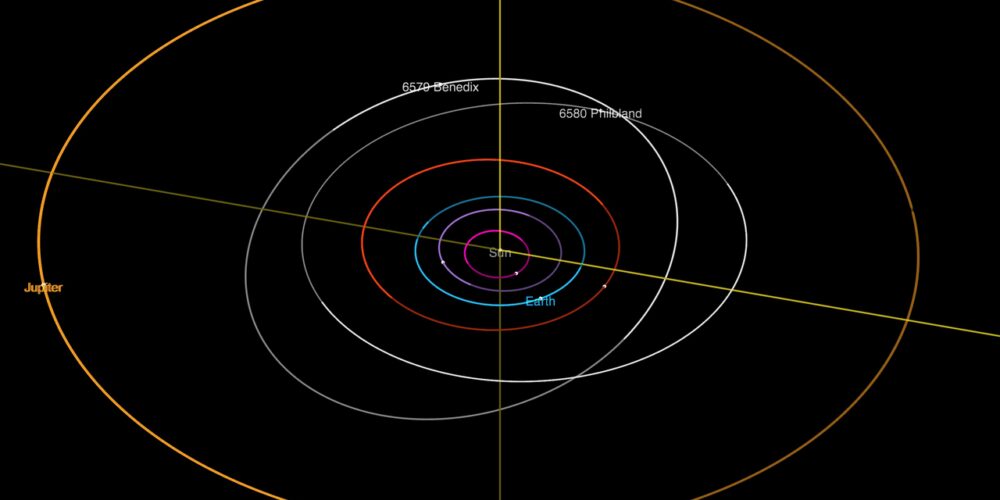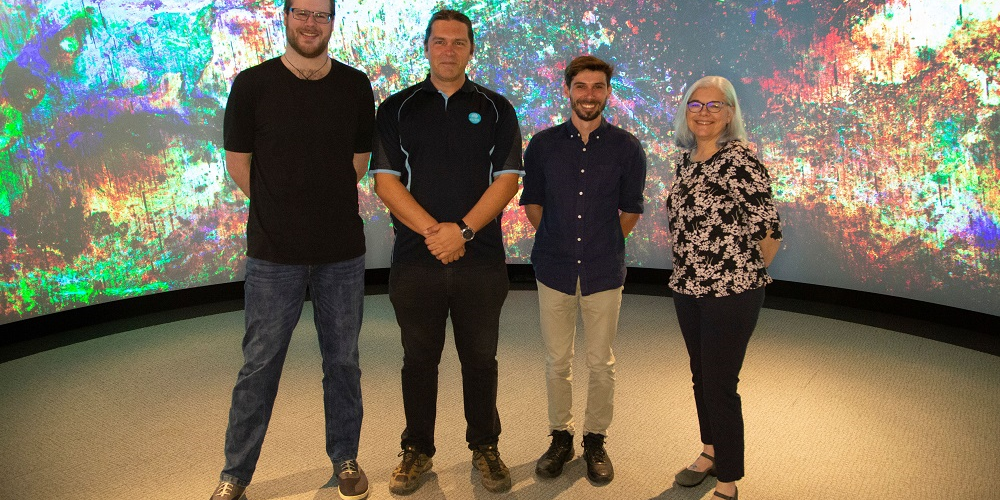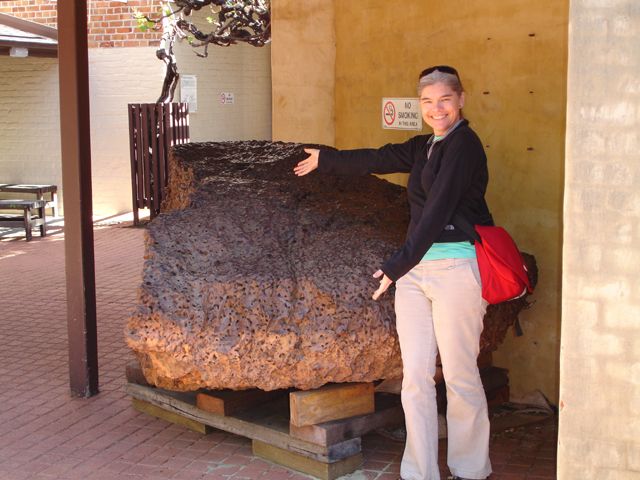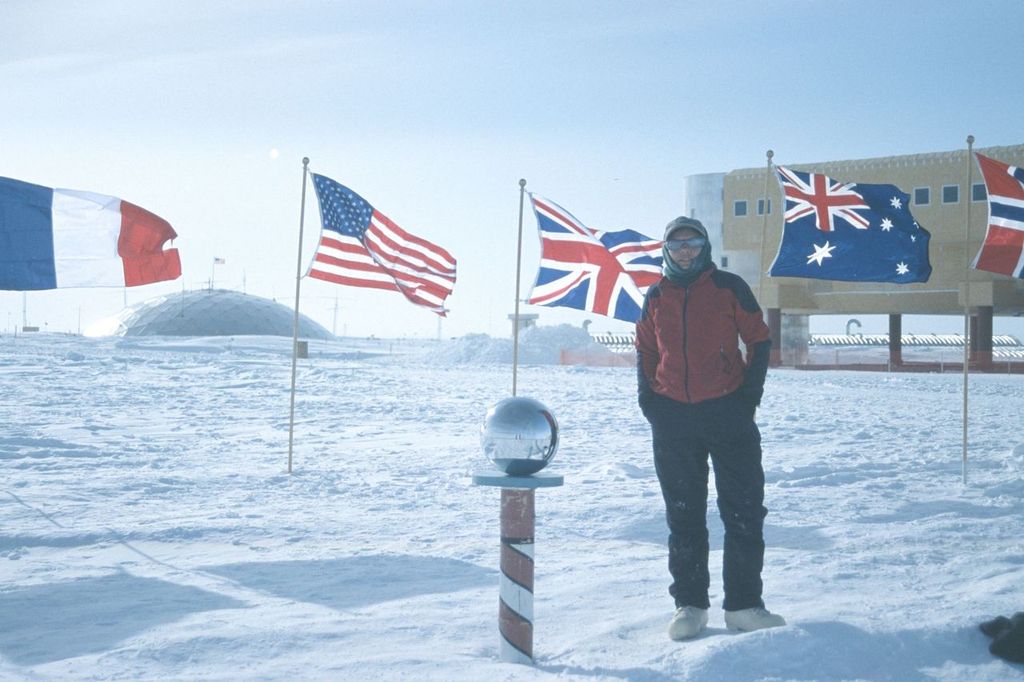Professor Gretchen Benedix is unlocking the secrets of our universe one space rock at a time.
Curtin University’s Associate Deputy Vice-Chancellor, Research has always been intrigued by space, but like the rocks she studies, she kind of crash-landed into planetary science.
“I started out as a psychology major because it seemed like the right path for me at the time. But I’ve always had questions about why we’re here and how we fit into the solar system. I just didn’t realise I could turn this interest into a career,” Professor Benedix said.
“So, I dabbled in some astronomy classes. And then physics. And before I knew it, I was firing hydrogen ions at rock samples in a lab!”
This detour has led to a stellar career, taking her from hunting for meteorites in Antarctica to being the first to map the entire surface of Mars with AI. She even has an asteroid named after her that’s currently orbiting somewhere between Mars and Jupiter.

‘Space rocks are cool’
For Professor Benedix, there’s nothing more exciting than tracking down a rock that’s travelled across the cosmos.
And as part of Curtin’s Desert Fireball Network, she gets to do just that. It’s one of the reasons she relocated to Australia with her family.
“Australia is a meteorite hunter’s dream,” Professor Benedix said. “It’s vast, flat and has very little vegetation for space rocks to hide, especially out in the Nullarbor Plain where our camera network is set up.”
“The cameras take images of the sky every night and alert us when a piece of space rock has landed on Earth.”
“Then I come in and figure out where it’s from and what it can tell us. And they can tell us a lot.”
Professor Benedix’s research on space rocks has helped us better understand the very building blocks of our solar system and how its evolution continues to shape Earth. By analysing meteorites and asteroid compositions, she is piecing together how our planets form and evolve.
“The Earth isn’t an isolated system. It’s part of this huge cosmic network that is constantly interacting with asteroids, meteorites, and space debris,” Professor Benedix said.
“Understanding those interactions helps us figure out where we came from and what might happen to us in the future.”
“We know asteroids hit Earth all the time, and while most are tiny and harmless, some could be real trouble.”
“It’s not Hollywood-style disaster stuff, but having the right data means we can actually prepare for potential impacts.”
Automating crater detection
But her research isn’t just about looking at what’s coming towards Earth.
Professor Benedix’s research has helped inform the world’s largest Mars crater database using a machine learning algorithm.

By training the algorithm to recognise craters using images, Professor Benedix and her team have been able to map more than ninety million impact craters on the red planet. They’ve even been able to identify the origin of ‘Black Beauty’ – the most famous Martian meteorite to land on Earth.
“We’ve automated what used to be a painstakingly manual process down to seconds.”
“Nobody’s ever done this at this scale before,” Professor Benedix said.
“With this algorithm, we’ve started to unravel the geological history of Mars and, one day this dataset might help answer questions like when water last flowed on the surface of Mars. It’s data that could even help NASA on their next Mars mission.”
“We can also use it to understand how other planetary surfaces evolve over time, including Earth’s and even the Moon.”
“I mean, who doesn’t want to know more about the Moon?!”
Promoting STEM
When she’s not on a hunt for space rocks, Professor Benedix dedicates her time to promoting STEM through science outreach programs. But she’ll admit – she has a particular affinity towards planetary sciences.

“I know there are kids out there who have burning questions about our place in the universe, just as I had, and I want them to feed their curiosity and also to know there’s a career to be made of it.”
As she balances research, leadership, and mentoring, one thing remains constant—her love for finding answers to big questions.
Whether it’s uncovering the secrets of Mars or helping the next generation of scientists find their passion, she’s proof that sometimes the best discoveries come from taking the scenic – or rather – the cosmic route.
Professor Benedix was appointed Associate Deputy Vice-Chancellor, Research last year after being in the role on an interim basis since June 2023.
– – –
This piece was featured in Impact Focus – a quarterly newsletter bringing you the latest in Curtin research. Sign up here to get it delivered straight to your inbox!



